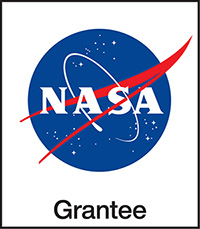Level Up! (Optional)
In the Educator Guide, you will see “Level Up!” Sections. These include great tips and activities that build and extend STEM and 21st Century skills, and create stronger connections between educators, youth, and families. They typically take a little extra time, so please plan accordingly.
- Cut out the circles on Engineering Activity 3 Secchi Disks Handout (PDF) and give one to each group. Explain that these disks are tools used by environmental professionals to measure water quality. Learners can hold the disks in place of the construction paper as they determine water clarity.
- Pass out the Acidity Chart so learners can reference common water contaminants and their acidity levels. (5 min.)
- Have the entire group decide on one additional observable feature to determine water quality. Have learners add it to the testing directions on How to Test Water Quality. (20 min).
- In addition to water quality, you can have learners think about water accessibility. Have them consider places where water may not be easy to get, such as communities without running water, and how this lack of accessibility affects people in those areas. (10 min.)
- Refer to the Engineering Design Process poster. Ask: What steps of the Engineering Design Process did you use today? (We investigated how water quality is measured.) (5 min.)
- NASA uses satellite missions to look for water on Earth. Learn more about how they are working on solving water problems on Earth. (5 min.)
- Ask this story prompt question: Can you tell a story about a time when you’ve had to observe water closely, either out in a natural setting or somewhere else? (Possible responses include while boating, fishing, or cooking.) Have learners share with a partner (note that the sharing can take forms other than speaking aloud). (20 min.)
- Tell learners, if anyone asks them what they did today, they can tell them “We explored water quality and how to measure it.” (5 min.)
- You can introduce learners to the industry terms potable water, greywater, and wastewater. Potable water is clean water that people can drink safely. Greywater is somewhat contaminated water, which has been used once and can be used again for some purposes. Wastewater is very contaminated water, which cannot be reused for most tasks before its quality is improved. (5 min.)

